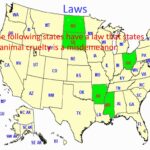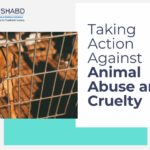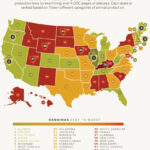In the intricate tapestry of modern agricultural practices, the issue of animal cruelty in the food industry stands out as a stark thread, fraying standards of compassion woven throughout our food systems. Beneath the surface of vibrant marketing and consumer satisfaction lies a complex web of regulations overseen by various entities, tasked with the formidable responsibility of safeguarding the welfare of animals subjected to human needs. Understanding who regulates animal cruelty in the food industry unveils not only the mechanisms of oversight but also the gaps in moral and ethical enforcement that still pervade the landscape of food production.
At the forefront of animal welfare regulations in the United States is the Animal Welfare Act (AWA), established in 1966. This pivotal legislation serves as the foundation upon which animal protection standards are built. However, despite its importance, the AWA does not encompass all animals; rather, it primarily protects pets and laboratory animals, leaving agricultural animals largely unshielded. Herein lies a critical flaw – the very animals that provide sustenance, the backbone of our culinary existence, remain vulnerable to inhumane practices due to these legislative exclusions.
Complementing the AWA is the United States Department of Agriculture (USDA), tasked with enforcing regulations on the treatment of animals within the agricultural sector. The Animal and Plant Health Inspection Service (APHIS), a subdivision of the USDA, plays a significant role in enforcing standards for livestock. However, scrutiny arises regarding the efficacy of inspections and the stringent nature of these regulations when compared to the scale of industrial farming. Like a watchful sentinel, the USDA shifts its gaze, but often fails to observe the minutiae of animal husbandry, leaving room for unscrupulous practices to flourish behind closed doors.
Furthermore, the Food Safety Inspection Service (FSIS), another branch of the USDA, oversees the humane slaughter of livestock. The FSIS conducts inspections during slaughter processes to ensure compliance with established humane handling guidelines. However, as whistleblowers and hidden camera investigations have revealed, violations often slip through the cracks. The stark reality remains that the enforcement mechanism often lacks the bite needed to rectify deeply ingrained systemic issues. This raises a poignant question: Are regulatory bodies equipped to combat the maleficence entrenched in the food industry?
The complexity of regulation is mirrored at the state level where additional legislation can supplement federal regulations. Various states have enacted their own animal cruelty statutes, designed to address the treatment of agricultural animals in specific regions. The inconsistency among states creates a patchwork quilt of cruelty regulations, whereby animals in some states enjoy greater protections than in others. Such disparities reveal a glaring oversight: the right to humane treatment becomes dictated by geographic location rather than moral obligation.
Beyond governmental bodies, numerous advocacy organizations have emerged as critical players in the fight against animal cruelty. Groups like the Humane Society of the United States and the American Society for the Prevention of Cruelty to Animals (ASPCA) work tirelessly to raise awareness, push for legislative reform, and expose cruel practices through investigations and public outreach campaigns. These organizations serve as essential watchdog entities, rallying public discourse and leveraging collective outrage to instigate changes in policy and practice.
Interstate commerce complicates the regulatory landscape, as animal welfare standards can fluctuate significantly across state lines. This cross-border dimension poses unique challenges for enforcement. For example, a slaughterhouse might adhere to strict humane handling practices in one state, while operating under less stringent regulations in another. Consequently, animals may endure suffering merely because they traverse a state border, embodying the paradox of a regulated cruelty that is anything but uniform.
The European Union offers a contrasting perspective on animal welfare regulations, boasting more stringent standards compared to those in the U.S. With directives focusing on the welfare of farm animals, the EU seeks to tackle issues such as battery cages and gestation crates on a broader regulatory scale. Such policies compel the U.S. to examine its own framework of animal welfare, pondering whether the American system remains mired in antiquated ideology while others transcend towards a more humane paradigm.
Public awareness has catalyzed a shift towards a more conscientious food culture. A growing number of consumers are demanding transparency in food production, seeking assurance that animals are treated humanely. This consumer-driven approach places pressure on regulatory bodies, urging them to tighten frameworks surrounding animal welfare. However, the road to meaningful change is fraught with challenges; entrenched corporate interests often wield significant influence over political processes, creating an insidious hurdle for reform advocates.
The aspirational vision for animal welfare encompasses not merely regulatory compliance but a wholesale cultural shift towards compassion and respect for all living beings within our food systems. It beckons a forthcoming era where the rights of animals are not relegated to legislative footnotes but rather celebrated as fundamental tenets of a humane society. Just as our agricultural practices evolve, so too must our understanding of animal welfare, bridging the chasm between consumer appetites and ethical responsibility.
In conclusion, while the structures exist to regulate the treatment of animals in the food industry, comprehensive and uniform enforcement remains largely aspirational. Effective oversight must evolve concurrently with consumer expectations, advocacy efforts, and cultural shifts towards animal welfare. As awareness grows and collective voices unite, it opens a path toward a future wherein the mistreatment of animals is not merely regulated but eradicated altogether. Until then, the quest for humane treatment of our fellow creatures continues, challenging us to re-evaluate not just how we consume, but how we coexist with the animals that feed us.







